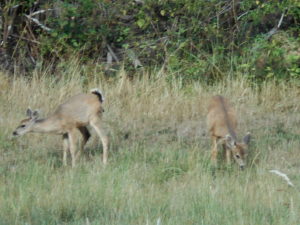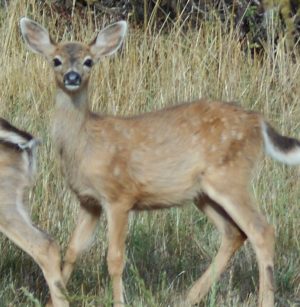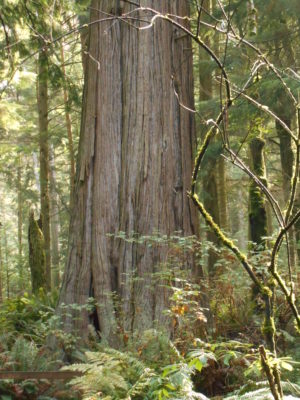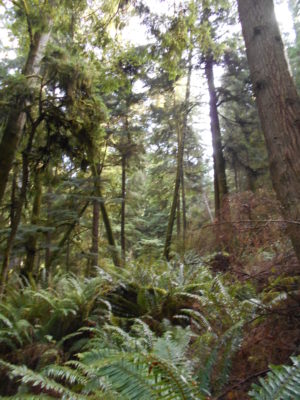Letter From Whidbey
Last May when I was two weeks away from my trip to England, I started a folder called “Stuff to Do When I Get Back” and began tossing notes quite liberally into it. After spending an idyllic June in England, I came home to my life, which includes wonderful friends and neighbors, my two cats and the spillage of all my interests into my work life. My private students showed up for their lessons. My watercolor class, All Present and the OK Chorale began . . . and ended. At the other end of the summer, I still hadn’t opened the folder labelled “Stuff to Do When I Get Back.”
“When I Get Back” has taken on new meaning because I am now on Whidbey Island, trying for the fourth time to work on a novel I keep telling myself I’m writing. As a last resort, I am doing an outline. I’ve resisted this because my mind doesn’t function in a linear way and outlines have never been much use to me. In fact I don’t think I ever actually made one. Ever. Even in school. I decided that since this novel has stalled four times already, I would try an outline. Then I could work on the story in chunks to match the way time parcels itself out in my life.
I’m up at my usual idyllic locale on the island, the Buddhist meditation retreat owned by my voice teacher, Tommie and her husband. I usually come up for a long weekend, intending to write, but I spend the first two days watching for deer, walking in the woods and reading poetry. Then it’s nearly time to go home.
I have been here a week. With one day to spare I have succeeded in creating a decent outline for a novel. My big break came on Day #2 when I was thinking how easy it had been to write a memoir: 99 Girdles on the Wall. I already knew what had happened; I only had to tell the story in an entertaining way. In trying to write fiction I got stuck over and over thinking that nothing had happened that I could re-call and write about. As my friend Debi (Putzer, the Attorney) elegantly put it, “It’s a lot harder to make things up from scratch than to lie about what happened in the first place.”
I had characters I liked: my neighbor Gwen who knows something about just about everything dressed them and gave them all cars. I had a plot I could live with and several optional endings. I had been studying the structure of plays, novels and TV shows for the past two years. Finally I asked myself, “well, could such and so happen?” Then it was a short trip to “Well of course, it could. Make anything happen that you want to. Just enjoy the process of writing it.”
This is exactly what I tell all my students: The whole point is the process. Don’t ask yourself if you have talent or if you’re as good as someone else or if something could happen. Just wallow in the experience and see what happens. So I’ve wallowed in my outline.
This is what no TV, no phone and no Internet access can do for a person. Actually all three are available—case in point the posting of this blog entry– it’s just that I have to pack my computer and phone in a bag and go down the hill to Tommie’s studio. I’ve been down there every day to use the piano but I’ve mostly left technology behind in Seattle.
I’ve never been here in the fall. (Correct me if I’m wrong but it seems to me that we changed from summer to fall in one day and that day was Friday, Sept 2, the day I came up here.) I’ve been entertained by a slightly different cast of wildlife than in the spring. For one, I smell skunk. I haven’t seen any and Tommie doesn’t know anything about them but I swear I smell skunk and I am not without some experience of skunk.
There are twin fawns scampering around the retreat center. They appear to be motherless children taking care of each other. I’ve figured out a few of their habits. When it’s clear in the late afternoon, they sun themselves like a couple of cats near an old tree that I can see from the east facing windows in the Buddha House. At dusk they tend to hang out around the main house down the hill. In the morning I hear them up the hill near the meditation cabins. I especially like coming upon them unexpectedly as I leave Tommie’s studio or head to the woods for a walk. Their heads come up and they stare at me.
“Whatcha doin’?” I ask.
“Nothin’,” they say defensively as kids all over the world do.
I sing to them and watch their ears go up.
“Could you be any cuter?” I ask.

I’ve seen more rabbits than I usually do. One bright little guy hangs out under my car every morning, nibbling the grass. I think a whole rabbit clan has a hole in that tree where the fawns sun themselves because I see them leaping around, disappearing and re-appearing there in the mornings. Except for their bright, white tails, the rabbits are the color of the foliage. When the scamper and jump, their cotton ball tails scribble in the air like sparklers on the Fourth of July.
In the woods I’ve found snakes either slithering out of my way or refusing to. One rather large garter snake (which I know can’t hurt me, yeah, yeah, yeah) stretched his full length across my path in the woods, leaned on his elbow and taunted me.
“Ok, move now,” I said. “Not funny. Move.”
I waved a stick at it. It stuck its tongue out.
“You’re scary. Go away.”
I picked up a branch the size of the proverbial ten foot-long barge pole, flicked him to the side, and hurried past. I’m pathetic, I know.
I’ve learned how to get from the retreat into South Whidbey State Park via the Fern Gully and Wilbert trails and had many adventures in my daily visits. I met a family of chipmunks where the Wilbert trail crosses the highway to the main entrance of the park. I saw numerous woodpeckers and met Dave, a birder who told me their official name: dryocopus pileatus. I wished he was as shy as his dog, Sephera, but I guess birders spend so much time being quiet that when they get the opportunity to talk, they never shut up. He was a cheerful guy, though and I liked knowing he was in the woods.
I learned that a fastidious, life-long city dweller could crap in the woods and survive. Of that episode I will say no more.
At a diversion along the Wilbert trail is a sign next to a cedar that says “Ancient Cedar.” I had passed the sign many times, always thinking to myself that the cedar didn’t look all that old to me. One day it occurred to me to look beyond the sign and sure enough, down the little diversion was as massive a tree trunk as I have ever seen except maybe that redwood in California you can drive your car through. It looked twelve feet across.
It’s been fenced in and a sign says that the tree is over 500 years old. Back in the 70s the Wilberts, among others, had thrown their arms around it to prevent its being felled. I stood for a long time, staring at it, and weeping. This tree was here when Shakespeare was staging Hamlet. It would be nothing out of the ordinary in say, England, but here in the Pacific Northwest, it feels, well, holy.
Tomorrow I head back to Seattle. With any luck all that “Stuff to Do When I Get Back” will be past its due date.
 RSS Feed
RSS Feed

Dear Elena,
This is simply beautifully written!! I know exactly where you were as have camped at the South Whidbey Park. It sounds like you took a week off to just BE – be by yourself, be unplugged, be alone in nature, be silent enough to notice the smallest bits of life exploding all around us at every turn. We are always too busy to notice. When we can just BE, amazing things happen. Thank you for writing this.
Susan
I was fortunate to have grown up in idyllic lake strewn southern Wisconsin, crapping weekly in my cousin’s woods, hunting frogs in a swamp a short paddle from the cottage. That life is no longer very easy to come by, but in a week I’ll be visiting that property that is still occupied by my family and decedents of fish and squirrels of old. I’ll be sure to think of you if I get bored.
When are you going to paint the deer in those beautiful photos? And that 500 year old cedar!!!